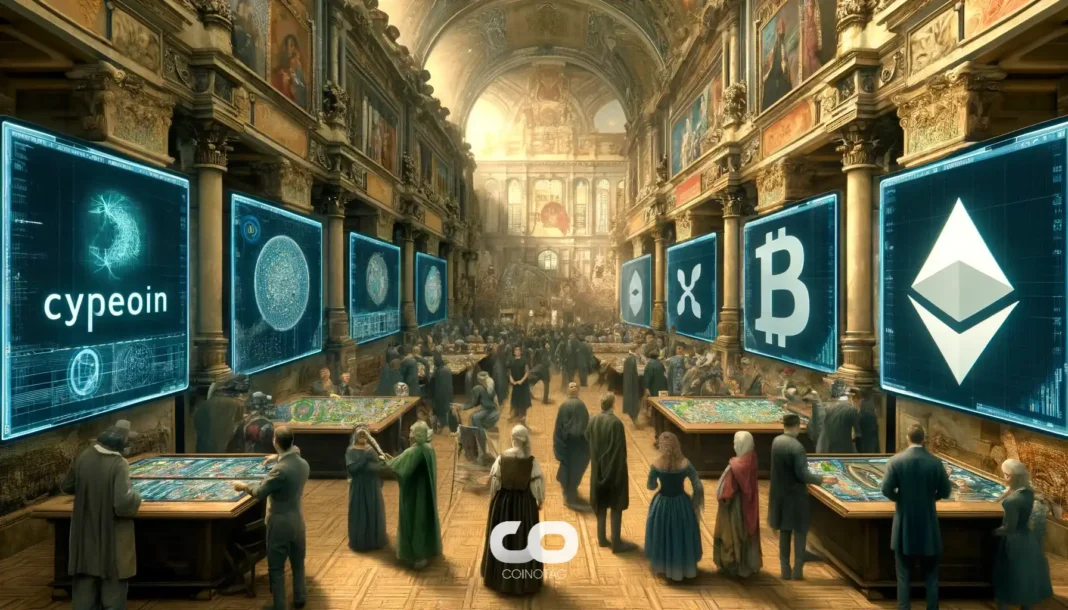-
Experts caution that stablecoin transaction volumes may be inflated by bots, wash trades, and flash loans that distort actual usage.
-
Unlike Visa’s real consumer transactions, stablecoin volume often reflects repeated transfers between wallets, lacking true economic value.
-
Claims of surpassing Visa’s $13.5 trillion annual volume may mislead, as low-fee blockchains allow easy manipulation of on-chain activity.
Stablecoins have seen a surge in transaction volume, sparking debate over their real impact on the financial landscape compared to traditional payment systems.
Why Experts Suspect Stablecoin Volume Might Be Inflated
Recently, Chamath Palihapitiya, CEO of Social Capital, posted on X that the weekly transaction volume of stablecoins has exceeded that of Visa, reaching over $400 billion. He added that companies like Visa, Mastercard, and Stripe are actively embracing the trend.

According to the data, in Q4 of 2024, the average weekly stablecoin transaction volume reached $464 billion. That’s significantly higher than Visa’s $319 billion. A Bitwise report estimates that stablecoins processed about $13.5 trillion in total transaction volume in 2024. This marks the first time stablecoin volume surpassed Visa’s annual total.
At first glance, this seems like a major milestone, suggesting that stablecoins could reshape the future of global payments. Citigroup even projects that the stablecoin market could reach $3.7 trillion by 2030.
Not everyone shares the enthusiasm. Some experts have warned that the reported stablecoin volume might be inflated. They argue it doesn’t reflect real economic activity and shouldn’t be directly compared with traditional systems like Visa.
Joe, an advisor at Maven 11 Capital, pointed out that professional traders can generate hundreds of millions in volume using very little initial capital.
“If you have $100,000 of USDC on Solana, you can do ~$136 million of ‘stablecoin volume’ for $1 in fees,” Joe said.
He used Solana as an example. Solana is a fast blockchain with extremely low transaction fees—about $0.0036 per transaction. Joe even joked that with $3,400, someone could double weekly stablecoin transaction volumes. He implied that the metric is easy to manipulate and not truly reliable.
Dan Smith, a data expert at Blockworks Research, strongly supported Joe’s view. Dan explained that using flash loans—uncollateralized loans in DeFi—can inflate volume even further at lower costs.
Flash loans allow users to borrow large sums without collateral, as long as they repay within the same transaction. This enables volume manipulation without requiring significant capital, further casting doubt on the numbers cited by Palihapitiya.
Rajiv, a member of Framework Ventures, was even more direct. He called stablecoin volume a “useless metric.” Dan Smith agreed. He added that the unusually high volume often signals exploitative behavior within the system.
Wash Trading and Bot Trading Undermine Economic Value
One key reason experts doubt stablecoin volume is the presence of wash trading and bot trading.
Wash trading involves repeatedly buying and selling between wallets controlled by the same person or entity. The goal is to artificially inflate transaction volume. Bot trading uses automated programs to conduct trades, often for arbitrage or fake liquidity.
A $1 million stablecoin transaction might just be money transferred between two wallets owned by the same person. It adds no real economic value. This contrasts sharply with Visa, where each transaction typically represents a real purchase or payment, like buying goods or services.
Last year, Visa’s dashboard also reported that only 10% of stablecoin transactions were genuine. A wash trading report by Chainalysis found that wash trades involving ERC-20 and BEP-20 tokens could total up to $2.57 billion in volume in 2024.
Conclusion
In summary, while stablecoins may be generating significant transaction volume statistics, the reality appears more complex. Experts emphasize the need for cautious interpretation of these figures, as many factors including wash trading and minimal economic engagement contribute to this apparent success. Moving forward, a deeper understanding of stablecoin dynamics will be essential as the financial landscape continues to evolve.






